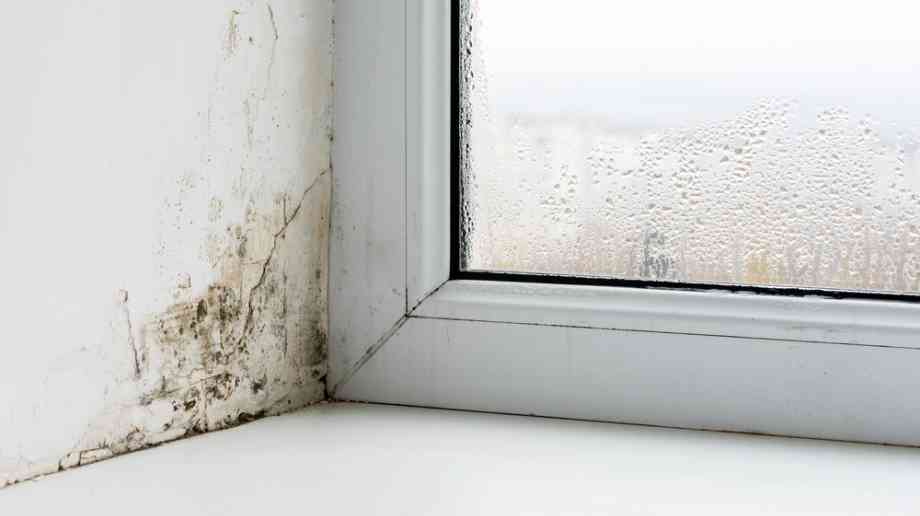Concrete Canvas Ltd is proud to be exhibiting at the International Security Expo for the first time, as we celebrate our 20th year in business.

Damp and mould - why it's not a lifestyle
James Berry from the PCA looks at causes of damp and mould, as well as explaining why tenant lifestyle should not automatically take the blame.
Back in September, the government issued guidance on ‘Understanding and addressing the health risks of damp and mould in the home’. This is a long-anticipated direct response to the coroner’s report into the tragic death of two- year-old Awaab Ishak in 2020, who died from a respiratory illness caused by mould in his Rochdale flat in 2020.
Let’s be clear, no one should become unwell due to the home they live in, and steps need to be taken to ensure that this never happens again.
In the Ministerial foreword, it states that: “everyone has the right to a warm, secure and decent home and to be treated with dignity and fairness, yet many people in England are living in a home with damp and mould, which may put their health at risk.”
It estimates of the number of homes in England with damp and mould ranges from four per cent to 27 per cent of homes, or 962,000 to 6.5 million households. However, in my personal experience, I believe the number would be much closer to 50 per cent. It’s a serious concern and for several years, PCA members have noted a surge in the levels of excess atmospheric moisture inside properties.
Setting out responsibilities
The guidance gives social and private sector landlords in England a thorough understanding of their legal responsibilities, and of the serious health risks which damp and mould pose.
Of significance is the clear directive to landlords who must ensure that the accommodation they provide is free from serious hazards, including damp and mould, and that homes are fit for habitation. It also states that they must treat cases of damp and mould with the utmost seriousness and landlords should act promptly to protect their tenants’ health.
Placing blame
The guidance is very clear, tenants should not be blamed for damp and mould as they: “are not the result of ‘lifestyle choices,’ and it is the responsibility of landlords to identify and address the underlying causes of the problem, such as structural issues or inadequate ventilation.’
Blaming the choices of those that have limited choices is not a constructive way forward. It’s likely to build barriers and prevent working together which will inevitably be required to prevent problems occurring. ‘Lifestyle’ has too often been a default response used without a understanding of what is actually occurring in the property. This needs to change.
Balancing act
Condensation problems occur due to an imbalance in the internal environment and there are a number of factors which need to be considered; moisture production, ventilation, thermal performance of the building envelope, and heat input.
In reality, tenants can influence only a couple of these; heat input and moisture production and these two factors together are often what are regarded as ‘lifestyle’. However holding tenants accountable entirely for these factors is not realistic either.
Moisture production and ventilation
Moisture production plays a role in contributing towards a condensation and mould problem. Some of the activities which have been considered lifestyle options have included washing, cooking, drying clothes indoors, having a pet and even breathing.
The majority of these are not lifestyle choices but simply necessities of life.
But even those that aren’t are carried out by the vast majority of the UK population, 62 percent of us have a pet and when asked at a recent conference how many of the delegates dried their clothes indoors, nearly all of the 150 attendance raised their hands.
But our homes are meant to deal with a certain amount of moisture production and they do this through the provision of ventilation i.e. extractor fans. Past studies have shown that unfortunately even during the construction of new houses,
an adequate provision of ventilation is rarely provided.
A study published in 2018 by AECOM and the Ministry of Housing, Communities & Local Government looking at ventilation and indoor air quality in new homes explored the quality of ventilation installations across seven new build developments throughout England.
The majority, 55, of the installs were background ventilators and intermittent extract fans), with 25 being continuous mechanical extract. Of those 80 installations, it was found that just three met the grade. Similar studies have provided similar findings.
The Property Care Association conducted its own poll during a recent webinar on ventilation and over 72 percent of the delegates believed less than 30 percent of installs complied with building regulations.
It is our belief that unfortunately the situation is much worse in our existing buildings.
So, if we are struggling to get this right in new builds, where the infrastructure is in place to ensure quality and compliance, the situation is only going to be much worse in our existing housing stock.
The role of heating
Economics obviously play a huge role in the amount of heat input, whilst we are not confronted with the same level of headlines around the cost of heating our properties this year, there can be no doubt that for many the purse strings are still drawn tight and people are still very cautious about how they use their heating.
Guidance is often given to maintaining a low and constant heat background heat and whilst this is sound advice in theory in practice, it is rarely adhered too.
A combination of factors
In my experience, there is rarely one contributing factor to a mould and condensation issue and it is normally a combination of factors e.g. poor provision of ventilation and poor performance of the building envelope.
Blaming the tenants was a default response to the problem without a real understanding of what is happening, it saved having to go into the property and establishing what the causal factors are, but taking this approach will just make providing the correct remediation more difficult. For example, providing additional ventilation in a building that is well ventilated but with a poorly performing building envelope and with little to no heat input will just make the building colder.
Why we must move away from lifestyle
We must move away from blaming tenants’ lifestyle for damp and mould issues, it’s a term which infers blame and is likely to cause barriers. Creating an ‘us and them’ mentality results in issues not being reported and causes more harm than good.
We need to encourage engagement and demand a better understanding of what is causing the issue. Skilled practitioners such as those that hold the CSTDB qualification as highlighted in the guidance are readily available who can provide the right level of diagnostics to help determine what factors are out of balance and help focus the remediation strategy accordingly so that the issue can be dealt with as efficiently and cost effectively as possible.
For more information on the control of dampness in buildings, click here
Company Focus
Event Diary
Join us for the landmark 10th Anniversary of the London Build Expo, the UK’s largest and most influential construction and design show.
Retail Supply Chain & Logistics Expo returns to Excel London across 12-13 November, once again bringing together the world of logistics, supply chain, eCommerce and retail innovation for two dynamic days of opportunity.
Every sport, from grassroots football to world-class tournaments, depends on one constant: high-quality playing surfaces and well-maintained green spaces.
Supplier Profiles
Bauder Accepts Keys to its New UK Distribution Centre at Gateway 14
Bauder marked a major milestone in its UK expansion with the official handover of a brand
Words of World: Bridging language barriers with excellence
At Words of World, we specialise in professional translation and interpreting, d
Latest Features
The British Institute of Cleaning Science (BICSc) and the Cleaning & Support Services Association (CSSA) have successfully completed a groundbreaking project aimed at exploring the future of cleaning. This collaboration marks a significant milestone in the cleaning industry, reflecting a shared commitment to embracing innovation with confidence.
The Crown Commercial Service’s (CCS) new framework on Language Services (RM6302), dealing with translation, transcription and interpreting, is live, running from 7th May 2025 to 6th May 2028.









